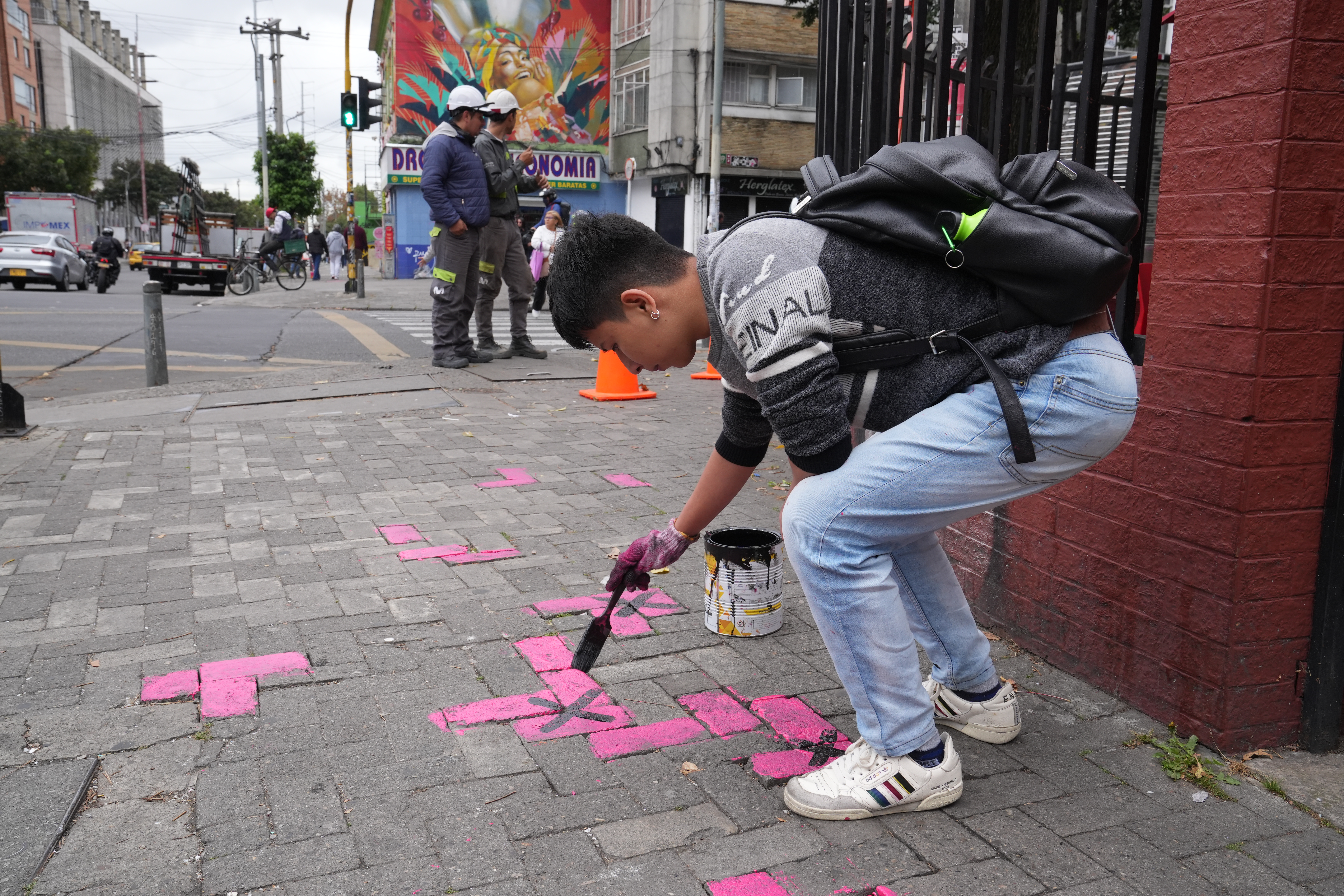Colombian activists try to shame city government into fixing broken sidewalks — by painting them pink
When Nicolas de Francisco is not at his office, you can often find him on the treacherous sidewalks of Bogotá, Colombia, carrying two buckets of paint.
With a paint roller and some brushes, the 35-year-old engineer and a determined group of volunteers cover loose tiles and broken slabs of concrete in bright pink. Then, they paint black Xs on top, in the hopes that pedestrians will steer clear of these hazardous chunks of the city’s sidewalks.
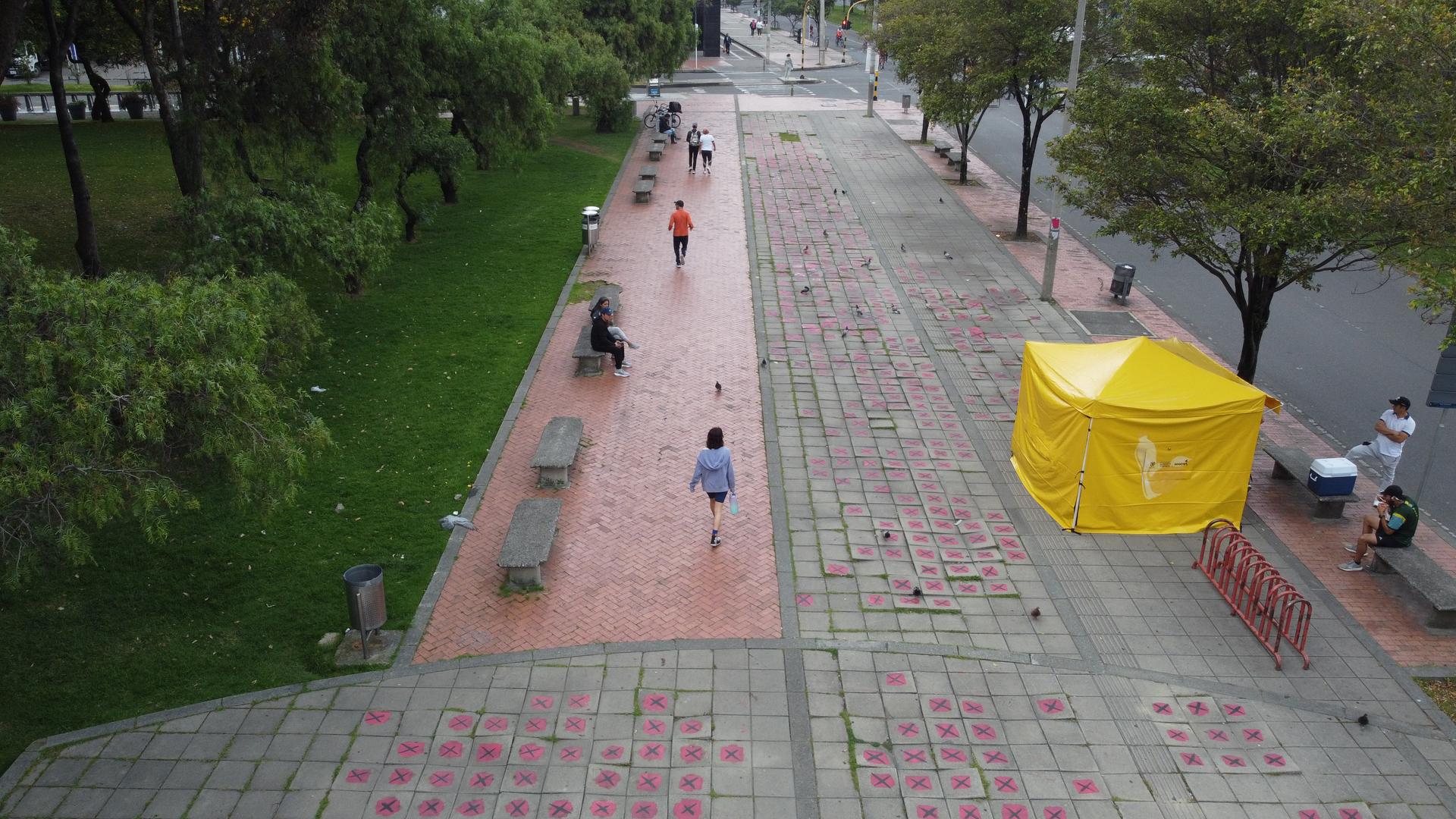
“If you see an X on the floor with a pink background, just try to avoid it,” de Francisco said as he painted over a cracked slab of concrete. “You could fall down, or you could get your foot wet.”
Walking is one of the most common ways to get around Bogotá. According to the city government, it accounts for about a third of all journeys taken each day in the city of 8 million people.
But sidewalks are often cracked, making it easy for those who don’t look down to trip. Other paths made from small bricks and clay tiles are also deteriorating in the rainy city, and as the tiles loosen, they store water underneath, splashing those who step on them with dirty water and grime.
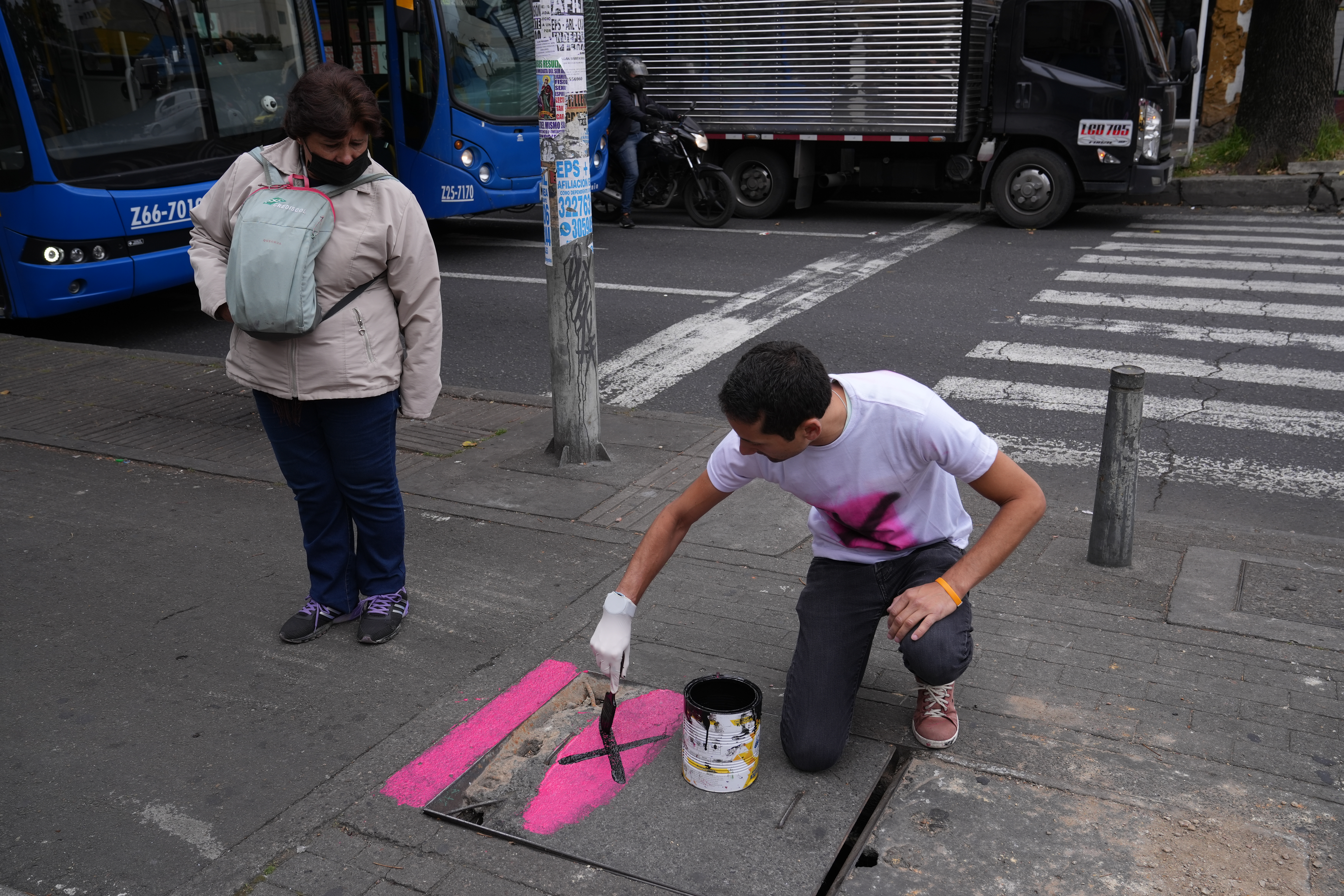
De Francisco and a group of volunteers have been trying to shame the city government into fixing these urban traps — by making them as noticeable as possible.
They’re hoping that their silent, but colorful protest, shows the city’s residents that they can defend public spaces and take matters into their own hands.
“We have to have proper sidewalks for people to walk on,” de Francisco said during a recent outing where he marked dozens of loose concrete tiles outside a hospital. “As citizens, we have to enforce control over institutions that are not performing their actual job.”
The campaign known as “Empecemos,” or “Let’s Begin,” started in April after an elderly friend of de Francisco’s tripped on a cracked sidewalk and broke his wrist.
The volunteers say that so far, they have painted over 17,000 loose tiles and broken slabs of pavement in the city where the government has long been tolerant of graffiti and street art — even if it is slow to fix decaying infrastructure.
After he paints the broken chunks of sidewalks in pink, de Francisco files complaints with the Department for Urban Development.
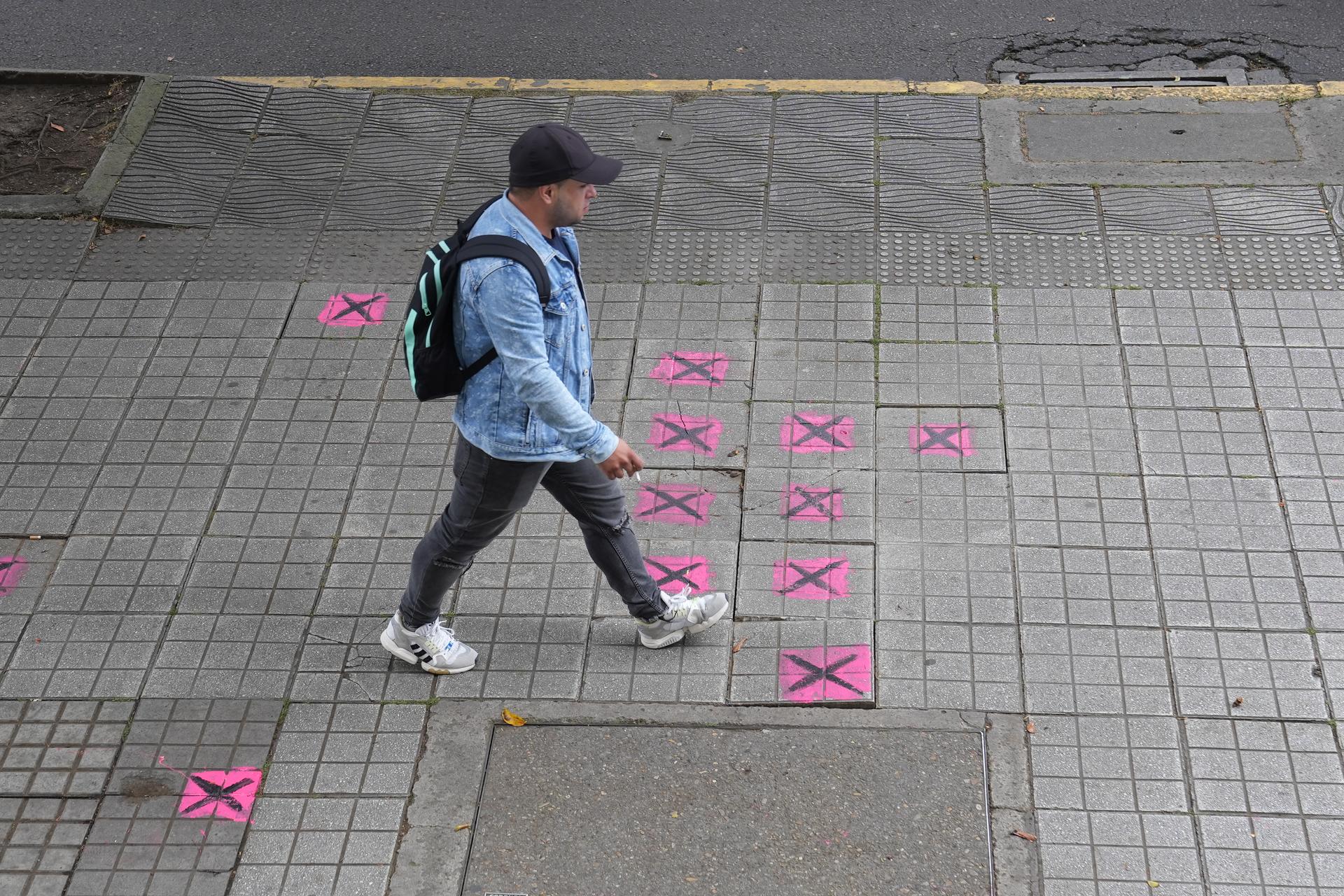
“Bogotá deserves better,” said de Francisco, who ran for Congress last year, but was not elected. He’s now running for the City Council; elections take place in October.
The volunteers are out in the streets several times a week, and at this point, their pink sidewalks with black marks have become a noticeable part of the city’s landscape, said German Sarmiento, an urban planning consultant who runs a blog on Bogotá’s public spaces.
But some people are starting to get annoyed with the initiative — even if it has good intentions.
“It’s become way too visible, and it might be considered by many as visual pollution,” Sarmiento said.
The marked sidewalks add to the current disorder of tags, posters and graffitis that is already present on the city’s streets, he said: “The marks suggest that anyone has the right to be painting over the public space.”
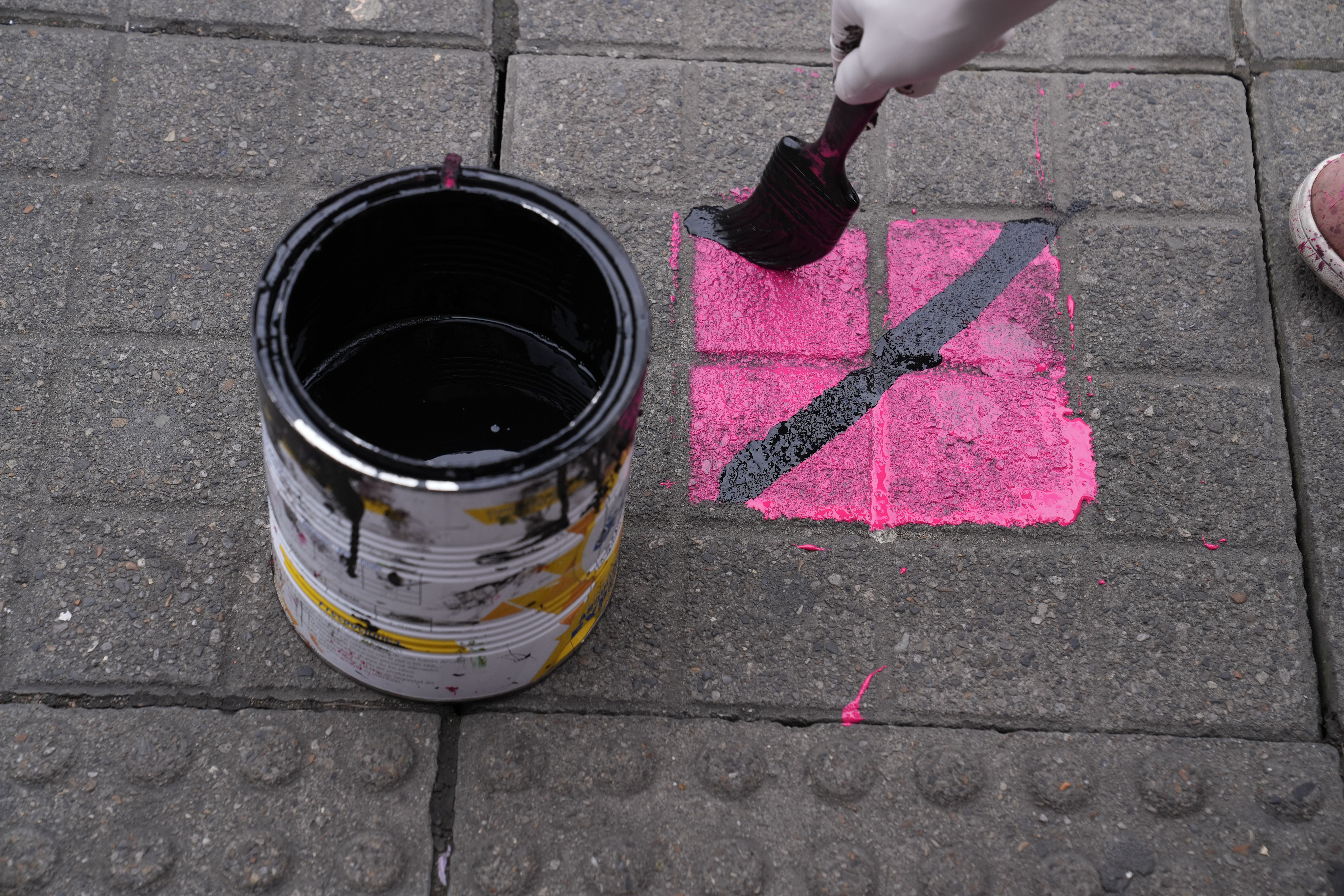
But others argue that they want their broken roads and sidewalks to be marked in pink to put more pressure on city officials.
Maria Paula Caparosso lives in the neighborhood of La Calleja in the north of the city.
After seeing de Francisco’s videos on Instagram, she wrote to him, asking him to paint pink marks around a pothole that’s around 5 feet wide.
“This started as a small hole six years ago, but now, it’s like a crater,” she said, after helping de Francisco to sweep dust away from the pothole’s edges so that the paint could stick better. “The city officials have never come here to fix this, and we need to drive on the other side of the road now, to stop our cars from getting damaged.”
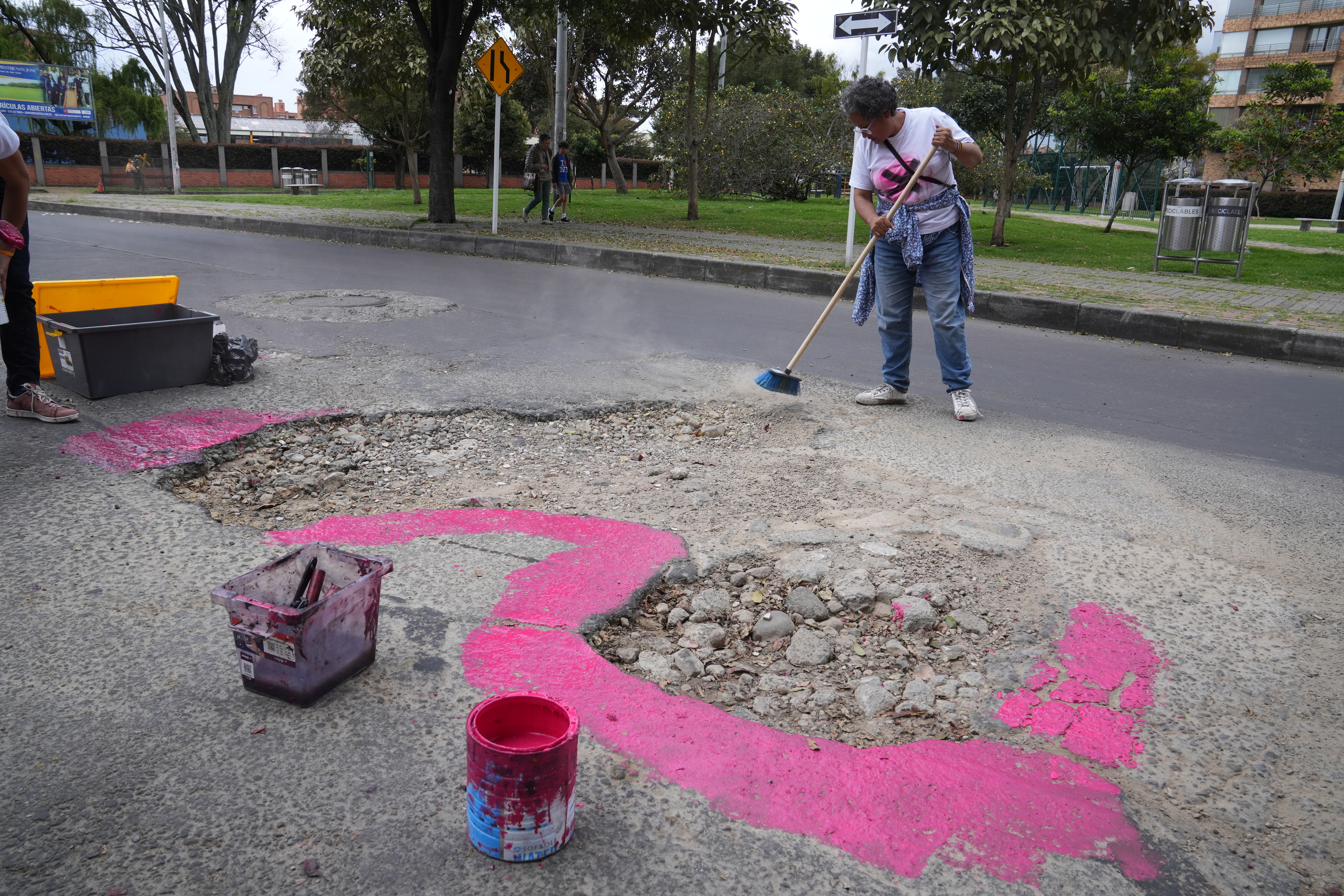
De Francisco’s protest has also been noticed by city officials, who argue that they have been working hard to fix potholes and broken sidewalks even before citizens started to paint them pink.
Planning Secretary Felipe Jimenez said that two years ago, the city set up a team that is dedicated exclusively to fixing sidewalks. The city also designed a new manual, he said, which spells out requirements for contractors, so that they build longer-lasting sidewalks.
“I think in the past, we’ve had problems because we didn’t give clear rules to contractors,” Jimenez said, adding that some contractors took advantage of the lax regulations to build things on the cheap.
Officials said the City’s Department for Urban Planning fixed 600,000 square meters of public space last year, though it’s not clear how much of that included sidewalks.
Jimenez raised his eyebrows and nodded his head when asked about the efforts to paint broken sidewalks in pink.
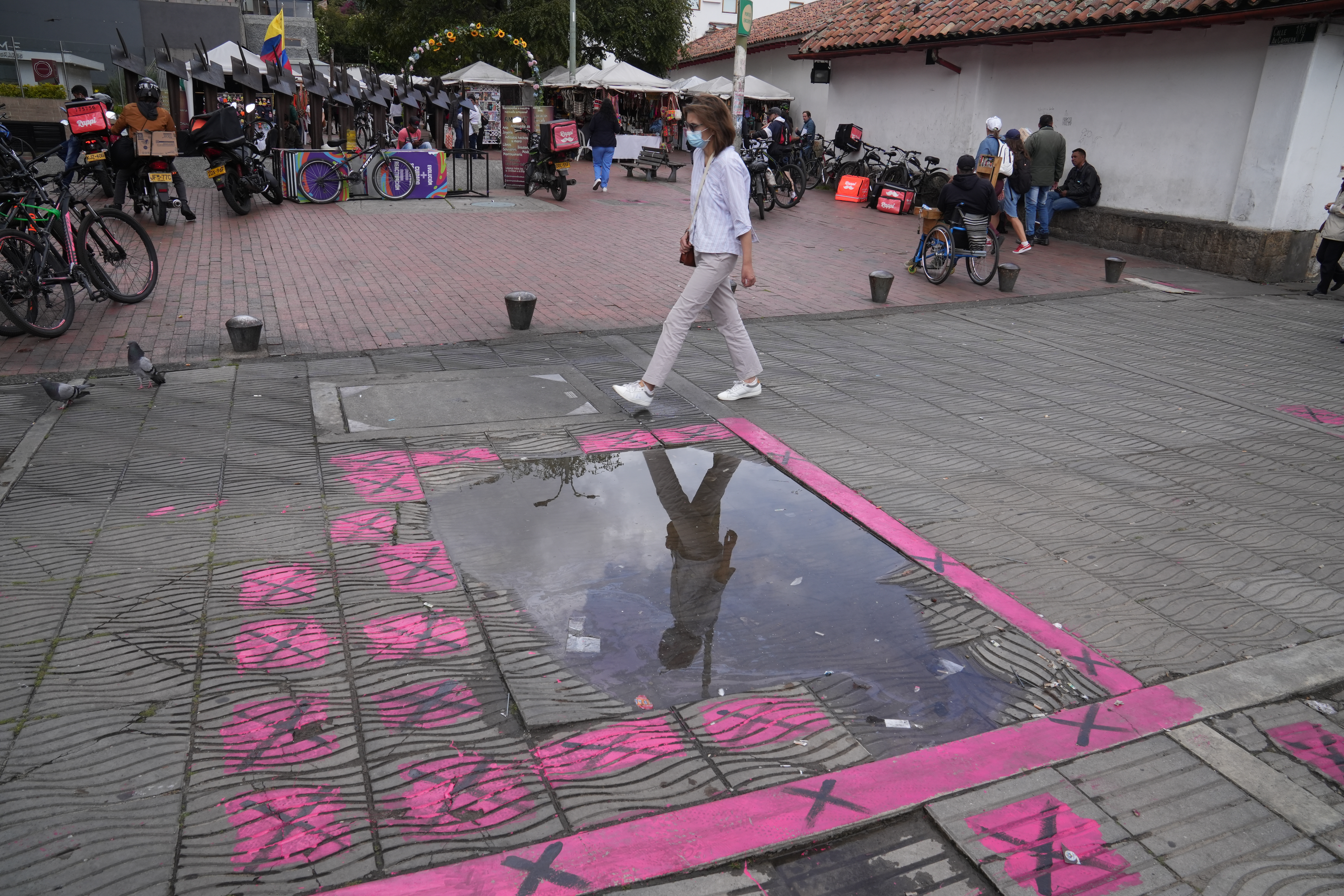
“We are in campaign season,” he said. “And lots of people are trying to become popular by pointing out the city’s flaws.”
But de Francisco said that his pink marks are no publicity stunt.
He argued that the pink paint is already getting results, with city crews fixing some of the stretches of pavement that he’s singled out, like a long stretch of broken pavement outside a shopping mall.
“They actually fixed only the slabs that were marked with the X, even though there were other broken slabs we missed,” de Francisco said. “That shows you the markings bother the public office and they are going to fix it.”
For de Francisco, it means that “Being an active civilian works,” he said. “Wherever you are, you can do some activism that can leave a positive impact on your community.”
The story you just read is accessible and free to all because thousands of listeners and readers contribute to our nonprofit newsroom. We go deep to bring you the human-centered international reporting that you know you can trust. To do this work and to do it well, we rely on the support of our listeners. If you appreciated our coverage this year, if there was a story that made you pause or a song that moved you, would you consider making a gift to sustain our work through 2024 and beyond?
